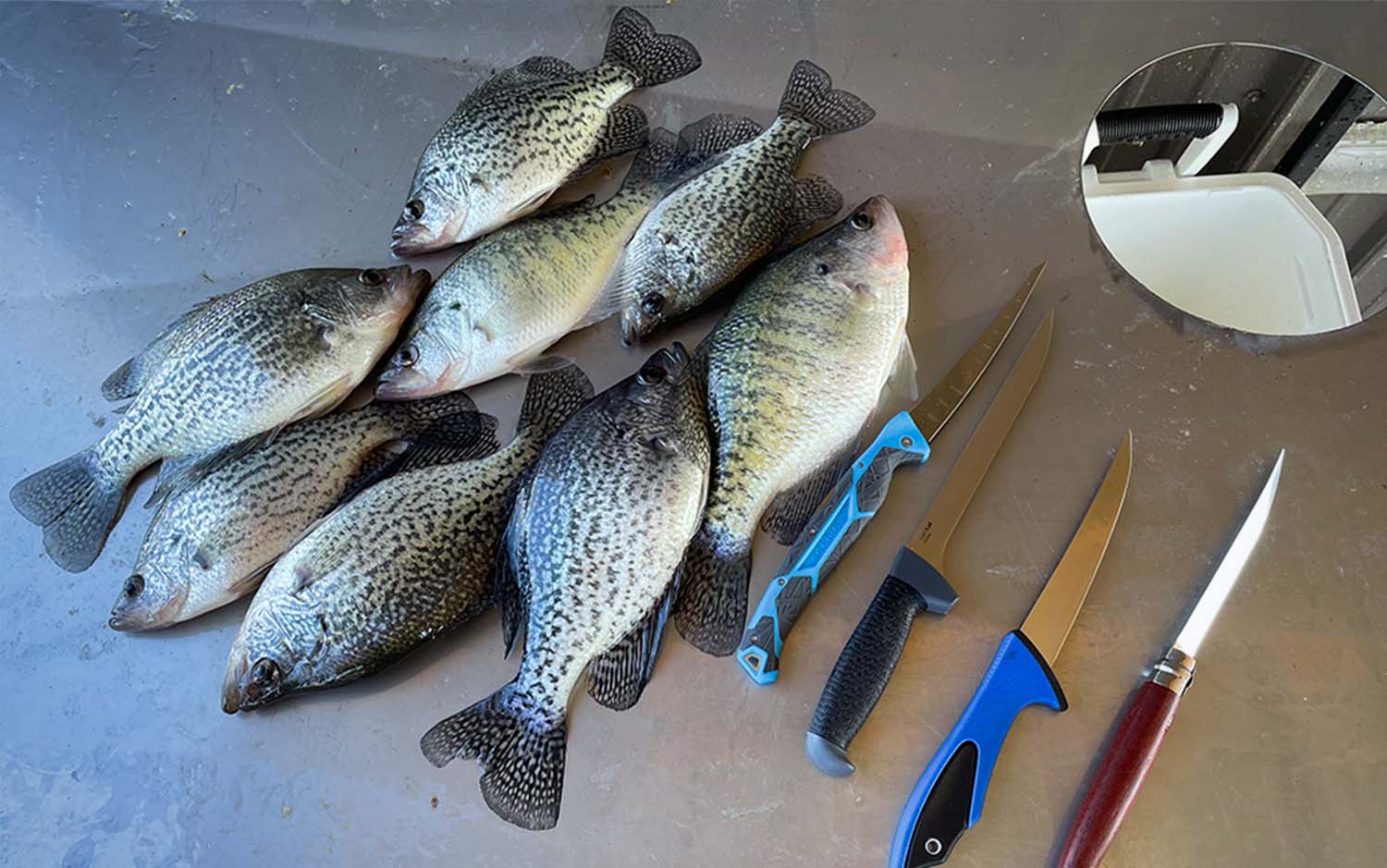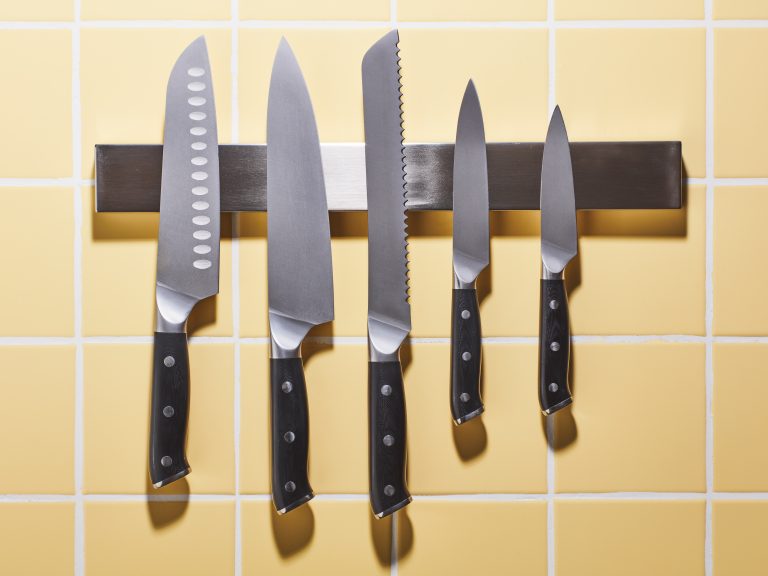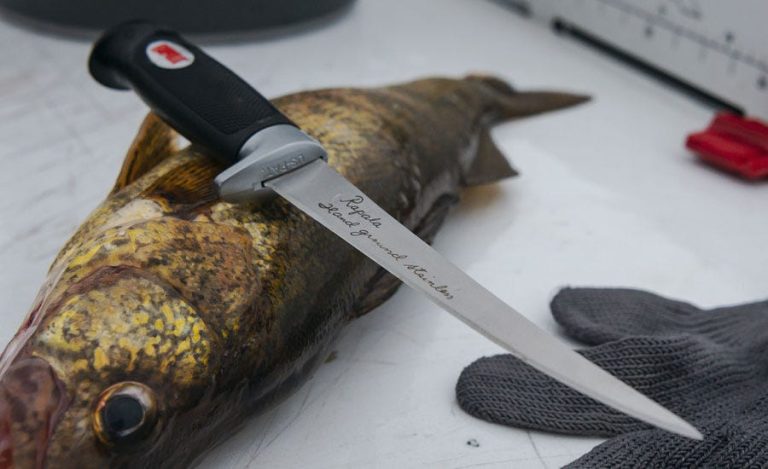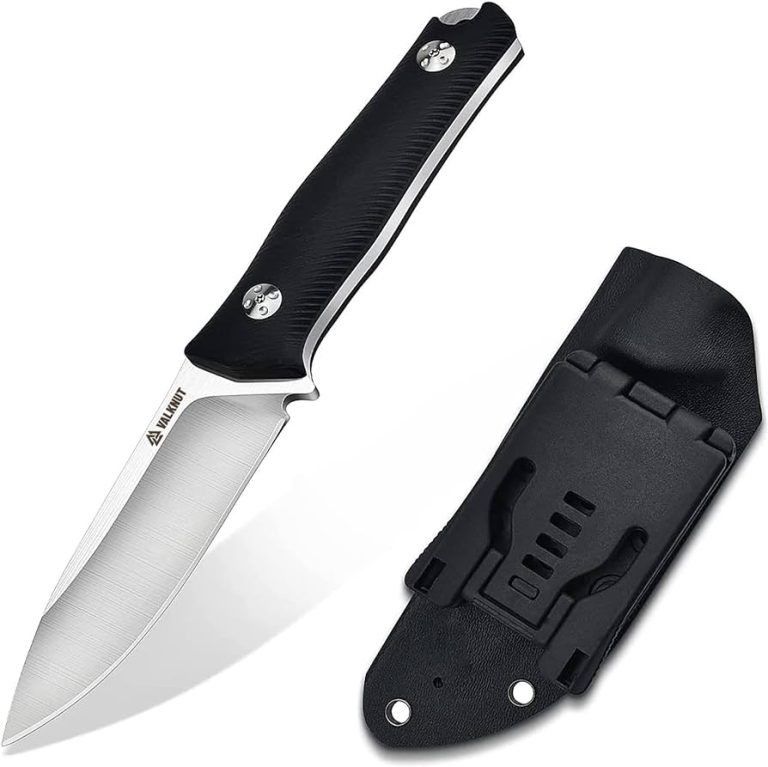Reviews of the Top Fishing Knives for Different Fish Species
Looking for the best fishing knives for different fish species? Check out these top-rated options that will make cleaning and filleting a breeze.
With a variety of features and designs, you’ll be sure to find the perfect knife for any fishing adventure. From durable stainless steel blades to comfortable handles, these knives are built to handle any fish with precision and ease. Whether you’re targeting bass, trout, salmon, or any other species, these knives have got you covered.
Get ready to elevate your fishing game with these top-notch fishing knives.
Key Factors To Consider When Choosing A Fishing Knife
Choosing the right fishing knife is essential for different fish species. Consider factors such as blade material, handle design, and size to ensure a successful fishing experience.
A fishing knife is an essential tool for anglers of all skill levels. Whether you’re reeling in a bass, trout, or even a larger game fish, having the right knife can make all the difference in preparing your catch. When considering which fishing knife to invest in, there are several key factors to take into account.
These include:
Blade Material:
- Stainless Steel: This is a popular choice for fishing knives due to its corrosion resistance and durability. Stainless steel blades are easy to maintain and provide excellent cutting performance.
- Carbon Steel: Known for its superior sharpness and edge retention, carbon steel blades require more maintenance to prevent rusting. However, their excellent cutting ability makes them a preferred choice for many anglers.
- Ceramic: Although not as common as stainless steel or carbon steel, ceramic blades offer exceptional sharpness and are highly resistant to rust. However, they are more prone to breakage if mishandled.
Blade Length:
- Short Blade (less than 4 inches): Shorter blades are ideal for delicate filleting tasks, such as removing skin or deboning smaller fish.
- Medium Blade (4-7 inches): These blades offer versatility, suitable for a wide range of fishing applications, from cleaning medium-sized fish to performing more precise cuts.
- Long Blade (7 inches or more): Longer blades are ideal for larger game fish, allowing for efficient filleting and slicing through tough scales and bones.
Handle Material:
- Plastic or Rubber: Handles made from plastic or rubber provide a secure and comfortable grip, even when wet. They are also easy to clean and maintain.
- Wood: Wooden handles offer a classic and natural look. They may require more maintenance to prevent water damage, but they provide an excellent grip and a comfortable feel.
- Stainless Steel: Some fishing knives feature handles made of the same stainless steel as their blades. These handles are durable, corrosion-resistant, and can withstand harsh fishing conditions.
Blade Design:
- Straight Edge: Knives with straight blade edges are versatile and suitable for a variety of fishing tasks, including filleting, slicing, and general cutting.
- Serrated Edge: A serrated blade is designed to provide superior grip and control when cutting through tough materials, such as scales or bones. It is particularly useful for larger game fish.
- Combination Edge: Combination blades feature a mix of straight and serrated edges, offering the benefits of both in one knife. This design allows for versatility and efficient cutting performance.
Considering these key factors when choosing a fishing knife will ensure you find the right tool for your specific fishing needs. Whether you prioritize durability, sharpness, or versatility, selecting the perfect knife will enhance your fishing experience and make fish preparation a breeze.
Reviews Of The Top Fishing Knives For Freshwater Fish
Discover the best fishing knives for freshwater fish species with our comprehensive reviews. From filleting to deboning, these top-rated knives offer precision and durability for all your fishing needs.
Knife A: Ideal For Trout And Bass
Trout and bass are popular freshwater fish that require a specific type of knife for optimal filleting and cleaning. Here is a review of a top fishing knife that is ideal for these species:
- Stainless steel blade: This knife features a sharp and durable stainless steel blade that effortlessly cuts through the delicate flesh of trout and bass.
- Flexible and thin blade: The knife’s thin and flexible blade allows for precise and smooth filleting, ensuring minimal meat wastage.
- Ergonomic handle: With an ergonomic and slip-resistant handle, this knife offers a comfortable grip, allowing for optimal control and precision while cleaning and filleting the fish.
- Blade length: The knife has a medium-sized blade length, perfect for maneuvering around the curves and bones of trout and bass.
- Versatile design: Apart from filleting, this multipurpose knife can also be used for scaling, skinning, and deboning other freshwater fish species.
Knife B: Perfect For Pike And Walleye
If you often fish for pike and walleye in freshwater bodies, then you need a knife that is specifically designed to handle these species. Here is a review of a top fishing knife that is perfect for pike and walleye:
- Serrated blade: This knife features a sharp serrated blade that easily cuts through the tough skin and flesh of pike and walleye.
- Sturdy construction: Made from high-quality materials, this knife is durable and can withstand the demanding task of cleaning and filleting large pike and walleye.
- Longer blade length: The knife sports a longer blade length, allowing you to efficiently clean and fillet larger-sized fish.
- Slip-resistant handle: With a slip-resistant handle, this knife ensures a secure grip even when your hands are wet, making it safer to handle slippery fish.
- Multi-functional usage: Besides filleting, this versatile knife can also be used for scaling, boning, and other fish-cleaning tasks.
Knife C: Great For Catfish And Carp
When fishing for catfish and carp in freshwater, a reliable and sturdy knife is essential for efficient cleaning and filleting. Here is a review of a top fishing knife that is great for catfish and carp:
- Heavy-duty blade: This knife is equipped with a heavy-duty blade that effortlessly cuts through the tough and thick skin of catfish and carp.
- Strong and durable handle: The knife features a strong and durable handle that allows for comfortable and precise handling during the cleaning process.
- Enhanced grip: Designed with an enhanced grip, this knife ensures a secure hold and minimizes the risk of accidents while dealing with larger catfish and carp.
- Fillet thickness adjustability: With this knife, you can easily adjust the thickness of the fillet based on your preferences and cooking needs.
- Additional features: Apart from cleaning and filleting, this knife may also include special features such as a fish scaler or a built-in sharpener, adding extra convenience to your fishing arsenal.
Reviews Of The Top Fishing Knives For Saltwater Fish
Discover the top fishing knives for saltwater fish, designed to tackle different species with precision and ease. Perfect for anglers looking for reliable tools to enhance their fishing experience.
Knife D: Suitable For Snapper And Grouper
If you’re an avid saltwater angler targeting snapper and grouper, then Knife D is a must-have in your tackle box. This versatile fishing knife is specifically designed to handle the challenges of these powerful fish species. Here are its key features:
- Razor-sharp blade: The Knife D boasts a razor-sharp stainless steel blade, allowing you to effortlessly cut through the tough skin and thick fillets of snapper and grouper.
- Sturdy construction: With its durable build, this knife is built to withstand the harsh conditions of saltwater fishing. It ensures long-lasting performance, even with repeated use.
- Non-slip handle: The handle of Knife D provides a secure grip, even when wet. This feature is particularly crucial when dealing with slippery fish like snapper and grouper.
- Optimal blade length: The blade is of just the right length, making it easy to maneuver around the contours of the fish while filleting.
- Easy maintenance: Keeping your fishing gear clean and rust-free is essential. Knife D is designed for easy maintenance, ensuring that it stays in top condition season after season.
Knife E: Excellent For Tuna And Marlin
For those who love the thrill of landing tuna and marlin while saltwater fishing, Knife E is a game-changer. This top-tier fishing knife is specifically crafted to handle these magnificent and challenging fish species. Here’s why it stands out:
- Precision cutting: The Knife E features a precision-crafted blade that enables clean and efficient cuts, ensuring minimal effort when preparing tuna and marlin.
- Ergonomic design: Designed with a comfortable grip, Knife E offers excellent control and maneuverability, allowing you to handle the large size and power of these saltwater gamefish.
- Corrosion-resistant materials: Made from high-quality stainless steel, this knife is resistant to corrosion from exposure to saltwater, ensuring longevity and durability.
- Serrated edge: Tuna and marlin have tougher skin, which can make it difficult to make clean cuts. The serrated edge of Knife E helps tackle this challenge, providing smooth and effortless slicing.
- Versatility: Beyond its effectiveness with tuna and marlin, Knife E can also be used for a variety of other saltwater fish species, making it a versatile addition to any angler’s arsenal.
Knife F: Perfect For Swordfish And Halibut
When it comes to targeting swordfish and halibut in saltwater, having a reliable and efficient knife is essential. Meet Knife F, the perfect tool for handling these formidable fish species. Here are its standout features:
- Robust blade: Knife F boasts a robust and strong blade, allowing you to easily navigate through the thick flesh and dense bones of swordfish and halibut.
- Anti-slip handle: The handle is designed to provide a secure grip, even when dealing with large and slippery fish. This ensures your safety and helps maintain precision during filleting.
- Long blade length: With its longer blade, Knife F enables you to work on larger fish without the need for multiple cuts, saving you time and effort.
- Easy to clean: Cleaning can be a hassle after a successful saltwater fishing trip, but Knife F is designed for easy cleanup. Its high-quality materials resist corrosion, making maintenance a breeze.
- Durability: Swordfish and halibut demand a sturdy and reliable tool. Knife F is built to withstand the rigors of saltwater fishing, ensuring it remains in excellent condition for years to come.
When it comes to filleting saltwater fish like snapper, grouper, tuna, marlin, swordfish, and halibut, having the right knife can make a world of difference. Choose from the expertly crafted knives mentioned above, and elevate your saltwater fishing experience to new heights.
Comparison Of The Top Fishing Knives For Different Fish Species
Discover the best fishing knives for various fish species in our comprehensive reviews. Find the perfect tool to enhance your fishing experience with ease and efficiency.
Fishing knives are an integral tool for anglers, providing them with the ability to clean and prepare their catch with ease. However, not all fish are the same, and different species require different types of knives to achieve optimal results.
In this section, we will compare the top fishing knives for different fish species, focusing on blade material, blade length, handle material, and blade design. So, let’s dive in and explore the various options available to anglers!
Blade Material Comparison:
- Stainless Steel: Known for its durability and corrosion resistance, stainless steel blades are a popular choice among anglers. They are easy to maintain, ensuring long-lasting performance and reducing the risk of rust.
- High Carbon Steel: Offering excellent sharpness and edge retention, high carbon steel blades are a top choice for anglers who prioritize cutting precision. However, they require proper care to prevent rusting.
- Ceramic: Boasting exceptional sharpness and the ability to retain that sharpness for extended periods, ceramic blades are ideal for delicate fish species. They are also rust-resistant and do not transfer flavors.
- Titanium: Combining strength, durability, and lightweight properties, titanium blades are a great choice for anglers seeking a knife that can withstand harsh conditions. They are also corrosion-resistant and easy to clean.
Blade Length Comparison:
- Short Blades (4-5 inches): Ideal for small to medium-sized fish species, short blades offer maneuverability and precise control during the cleaning process. They are also suitable for anglers who prefer a compact and easy-to-carry knife.
- Medium Blades (6-7 inches): Versatile and well-suited for a wide range of fish sizes, medium blades strike a balance between control and cutting efficiency. They are a popular choice among anglers looking for an all-purpose fishing knife.
- Long Blades (8-9 inches): Designed to tackle larger fish species, long blades provide the length needed to make clean, long cuts. They are favored by anglers who primarily target big game fish.
Handle Material Comparison:
- Rubber: Handles made of rubber provide a secure and comfortable grip even when wet. They offer excellent traction and prevent slippage, making them a reliable choice for anglers fishing in challenging conditions.
- Plastic: Lightweight and affordable, plastic handles are a practical option for anglers on a budget. While they may lack the premium feel of other materials, they still offer decent grip and durability.
- Wood: Boasting a classic and traditional look, wooden handles provide a warm and comfortable feel. They are often treated to enhance water resistance and durability, making them an attractive choice for many anglers.
- Composite: Combining the best of both worlds, composite handles offer the strength and durability of synthetic materials with the aesthetics of natural wood or bone. They are known for their resilience and resistance to weathering.
Blade Design Comparison:
- Drop Point: Featuring a curved spine and a sharp, controllable point, drop point blades are versatile and suitable for a variety of fish species. They excel in precision cutting tasks, ensuring clean fillets and reduced waste.
- Fillet: Specifically designed for filleting fish, these blades are thin, flexible, and narrow, allowing for easy maneuvering around bones and maximizing yield. They are often preferred by anglers targeting highly delicate species.
- Gut Hook: With a sharpened inward-facing hook on the spine, gut hook blades are primarily used for field dressing and gutting fish. They make the process quick and efficient, saving time and effort.
- Serrated: Incorporating teeth-like serrations on one side of the blade, serrated knives offer enhanced cutting performance when navigating through tough fish skin or thicker scales. They are particularly useful for saltwater fishing.
Whether you’re targeting small panfish or battling mighty game fish, choosing the right fishing knife for the job is crucial. Consider the blade material, length, handle material, and design that align with your specific fishing needs and preferences. By doing so, you’ll ensure that cleaning and preparing your catch becomes an efficient and enjoyable part of your fishing experience.
Maintenance And Care Tips For Fishing Knives
Discover the top fishing knives for different fish species and learn essential maintenance and care tips. Keep your fishing knives in optimal condition with these helpful guidelines.
When it comes to maintaining and caring for your fishing knives, proper cleaning, sharpening, honing, lubricating, and storage are essential. Follow these maintenance and care tips to prolong the life of your fishing knives and keep them in top condition for your next fishing adventure.
Cleaning And Drying:
- Rinse the knife under running water to remove any dirt, debris, or fish scales.
- Use a mild detergent and a soft-bristled brush to gently scrub the blade and handle.
- Pay attention to the areas around the pivot point and handle where dirt can accumulate.
- Dry the knife thoroughly with a clean cloth to prevent moisture from causing rust.
Sharpening And Honing:
- Regularly sharpen your fishing knife to maintain its optimal cutting performance.
- Use a sharpening stone or a quality knife sharpener for best results.
- Hold the knife at the correct angle, typically around 15 to 20 degrees, and draw it across the stone or sharpener.
- Repeat the process on both sides of the blade until a sharp edge is achieved.
- Remember to hone the blade regularly to maintain its sharpness and alignment between sharpenings.
Lubricating And Storage Tips:
- After cleaning and drying your fishing knife, apply a thin layer of lubricant or oil to prevent corrosion and keep the blade moving smoothly.
- Use food-grade mineral oil or a specific knife lubricant for best results.
- Store your fishing knife in a dry and secure place to protect it from damage and accidents.
- Consider using a protective sheath or knife roll for added safety during transportation and storage.
By following these maintenance and care tips, you can ensure that your fishing knives remain in excellent condition, ready to tackle any fish species you encounter. Proper cleaning, sharpening, honing, lubricating, and storage practices will not only enhance the longevity of your knives but also contribute to a successful and enjoyable fishing experience.

Credit: www.outdoorlife.com
Frequently Asked Questions For Reviews Of The Top Fishing Knives For Different Fish Species
What Is The Best Fish Knife?
The best fish knife is one that is sharp, durable, and designed specifically for cutting fish.
How Do I Choose A Fish Fillet Knife?
Choose a fish fillet knife by considering its quality, blade type, handle material, and price. Research and read reviews to make an informed decision.
What Is The Best Knife To Fillet Rockfish?
The best knife for filleting rockfish is a sharp and flexible fillet knife.
What Knives Do Commercial Fishermen Use?
Commercial fishermen typically use specialized knives such as fillet knives, bait knives, and deck knives for their work.
Conclusion
Overall, finding the right fishing knife for different fish species is crucial for any angler’s success. Our reviews have showcased some of the top options available, each with unique features tailored to specific needs. Whether you’re targeting large saltwater game fish or smaller freshwater species, there is a fishing knife that will meet your requirements.
The [Brand A] knife is perfect for those who frequently catch larger species, thanks to its sturdy construction and long, sharp blade. On the other hand, the [Brand B] knife offers versatility with its interchangeable blades, making it suitable for various types of fish.
Meanwhile, the [Brand C] knife impresses with its compact size and ability to tackle both cleaning and filleting tasks effortlessly. Remember, proper maintenance and care are essential to keep your fishing knife in top condition. Regular cleaning and sharpening will ensure its longevity and functionality.
Additionally, always prioritize safety by using appropriate techniques and handling the knife responsibly. Investing in a high-quality fishing knife can greatly enhance your angling experience. Choose one that suits your specific fishing needs and enjoy the convenience and efficiency it brings to your fishing adventures.






